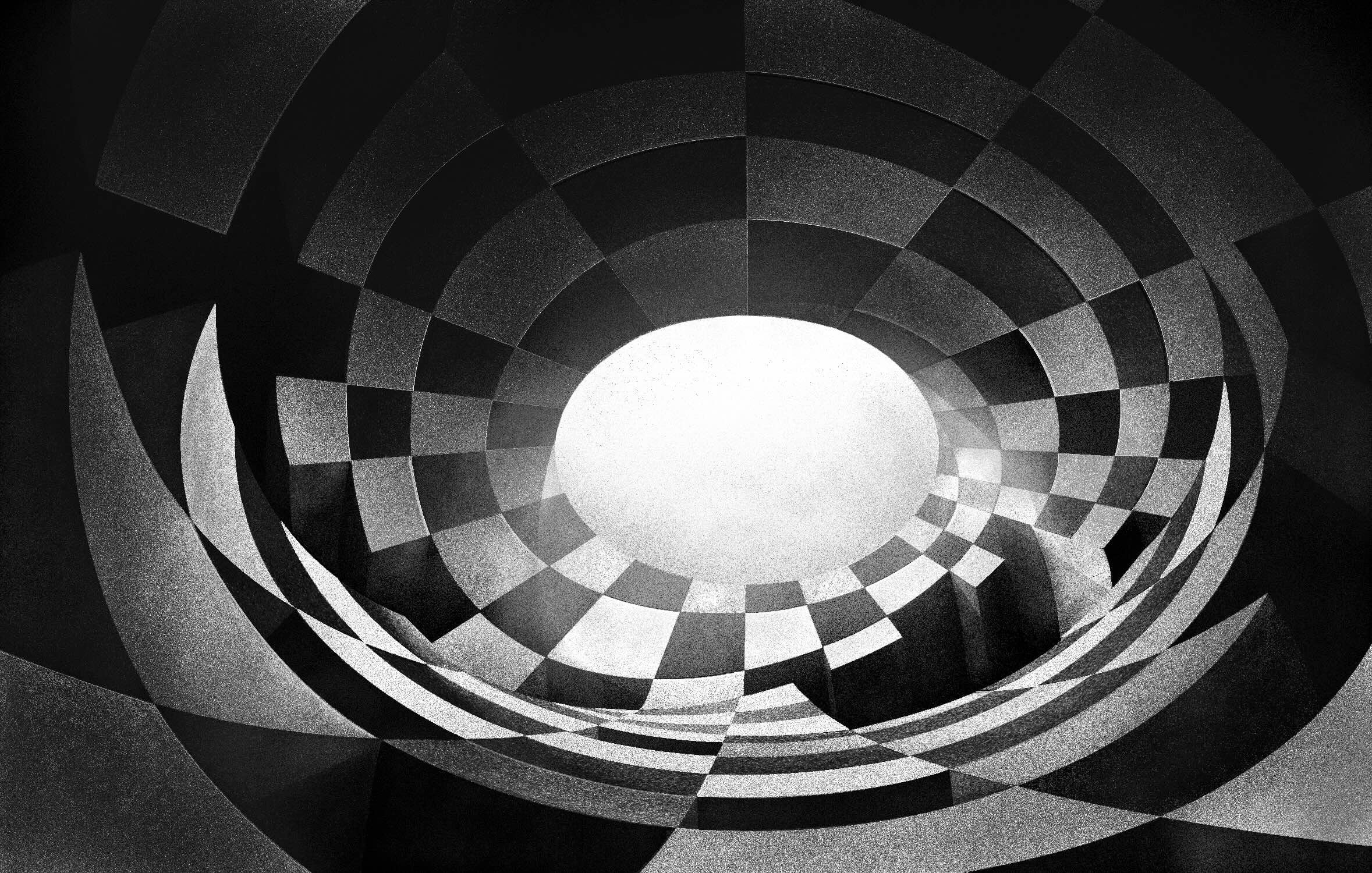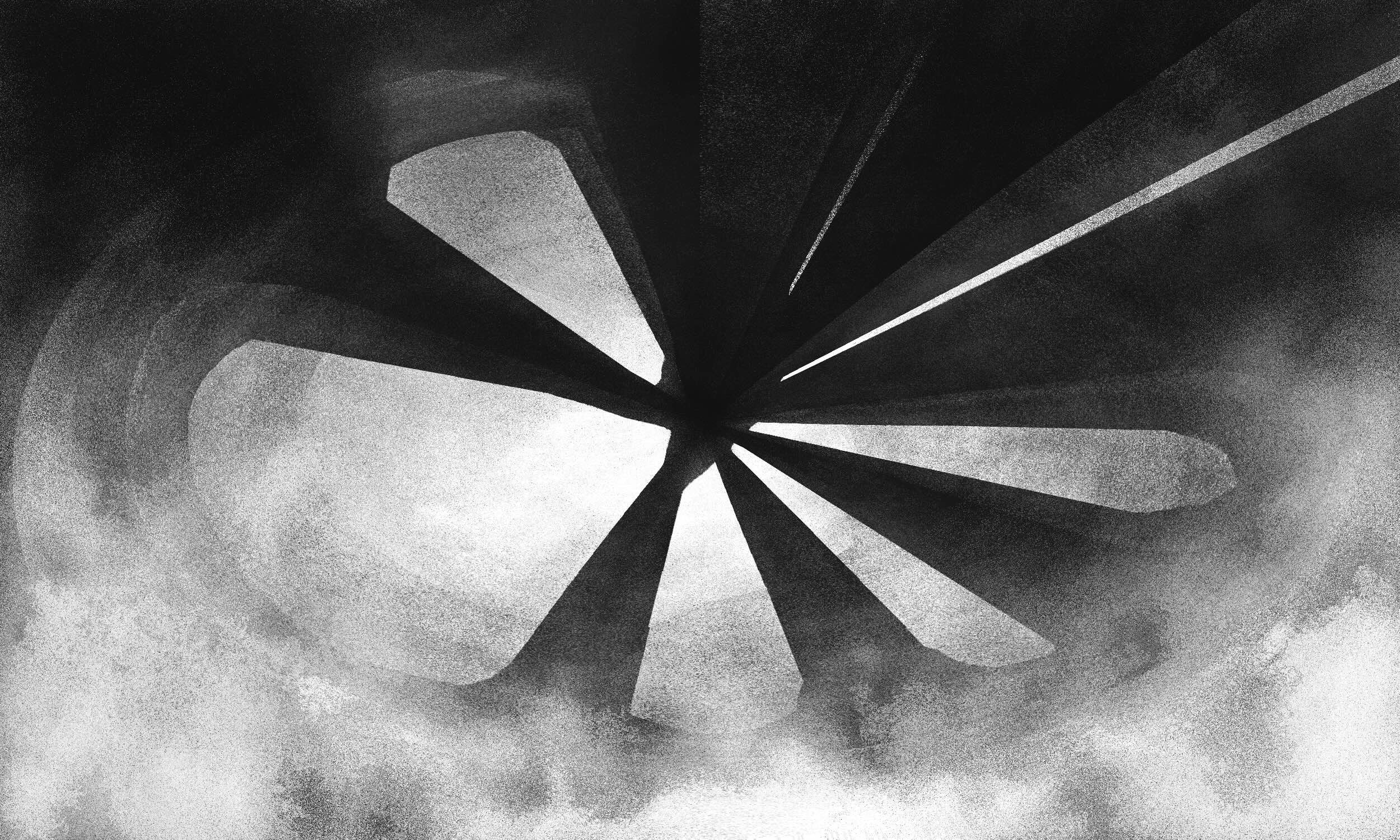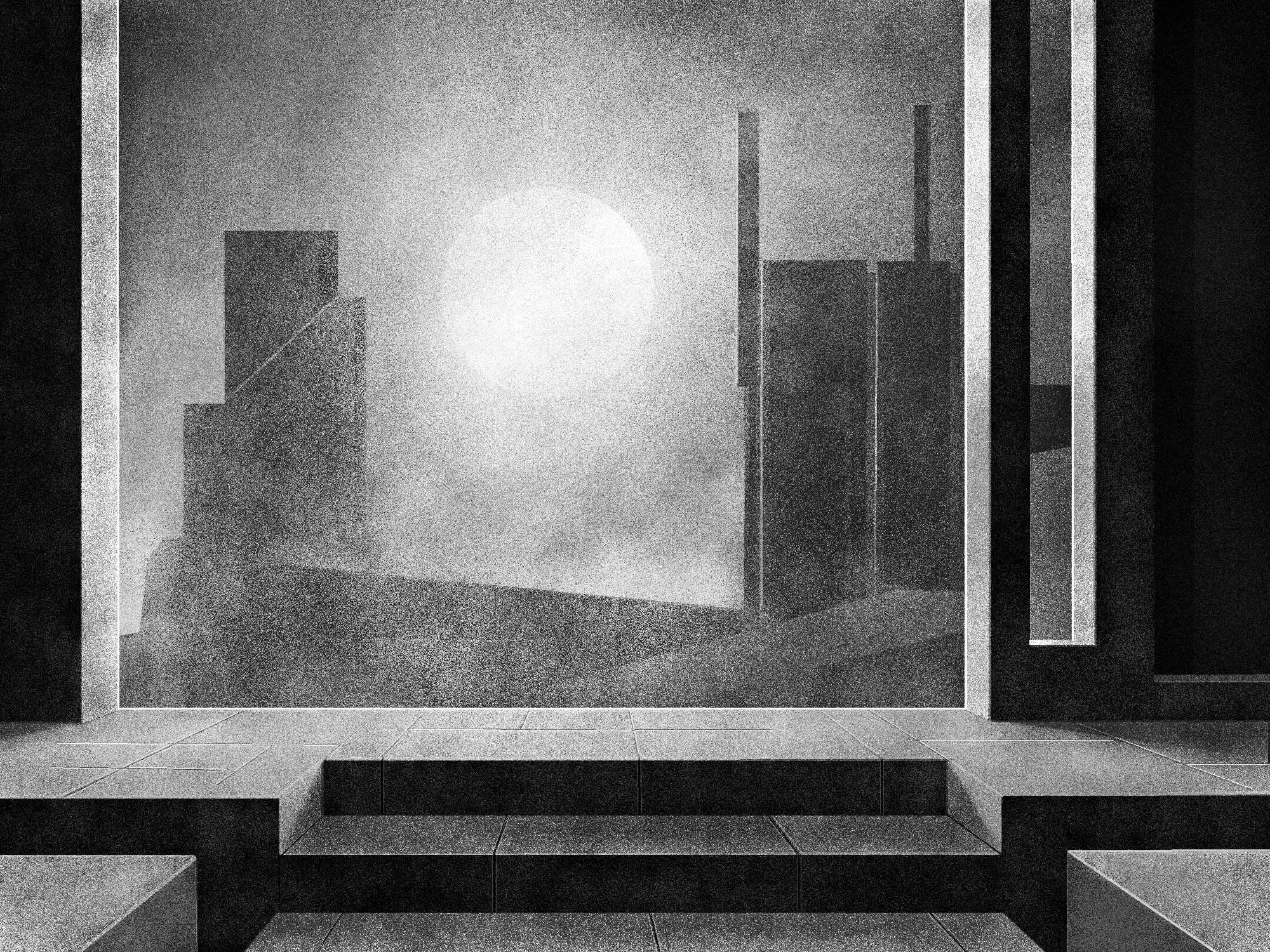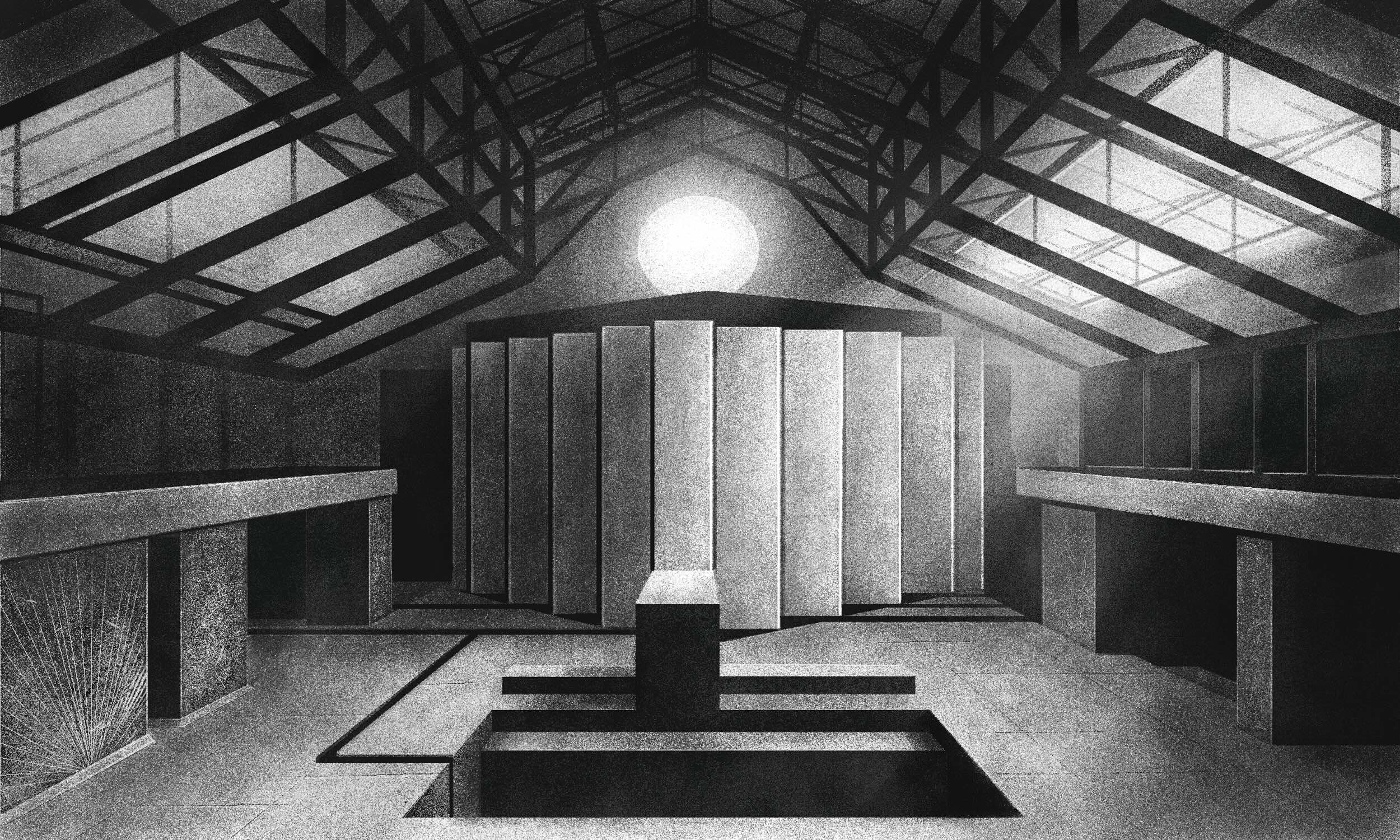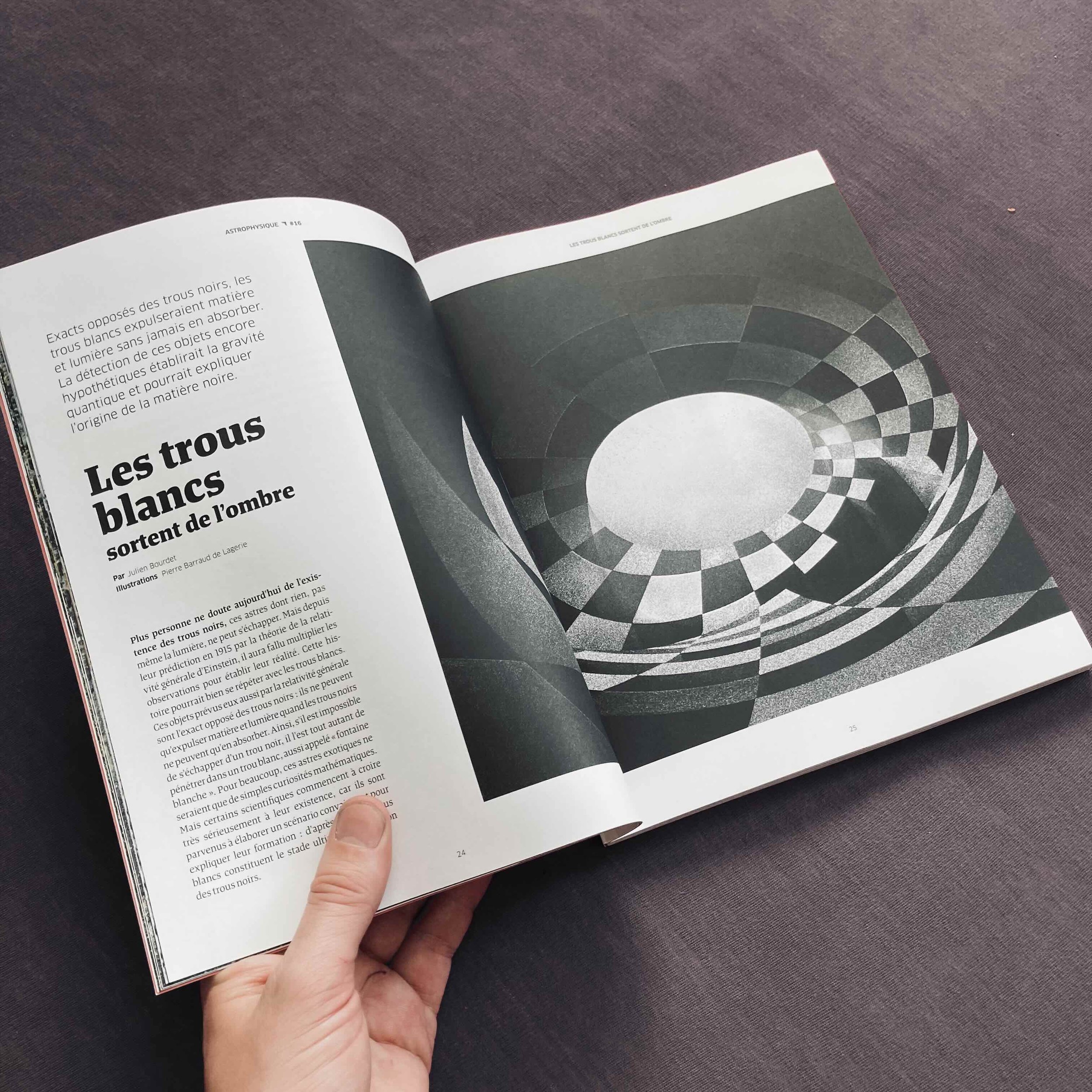
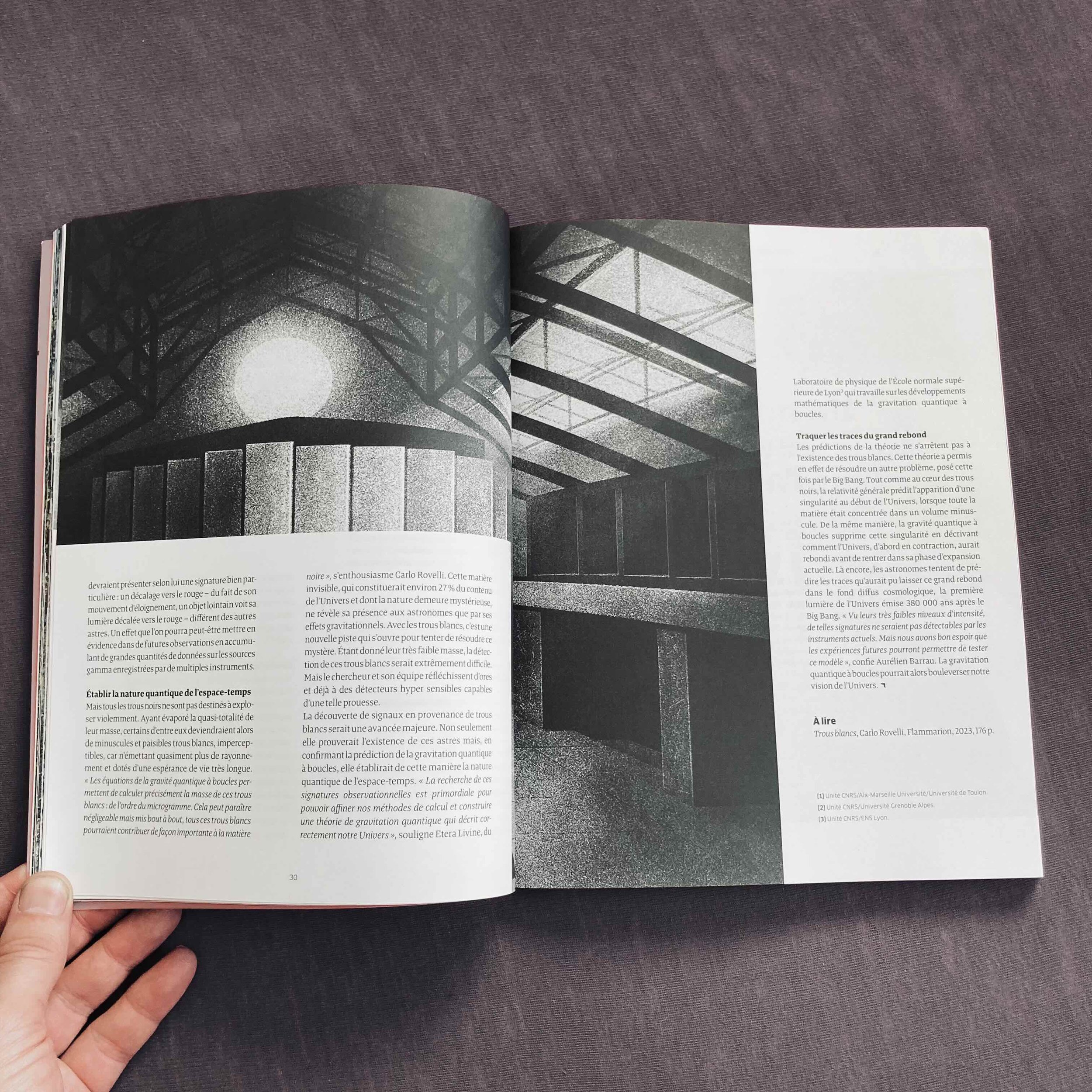
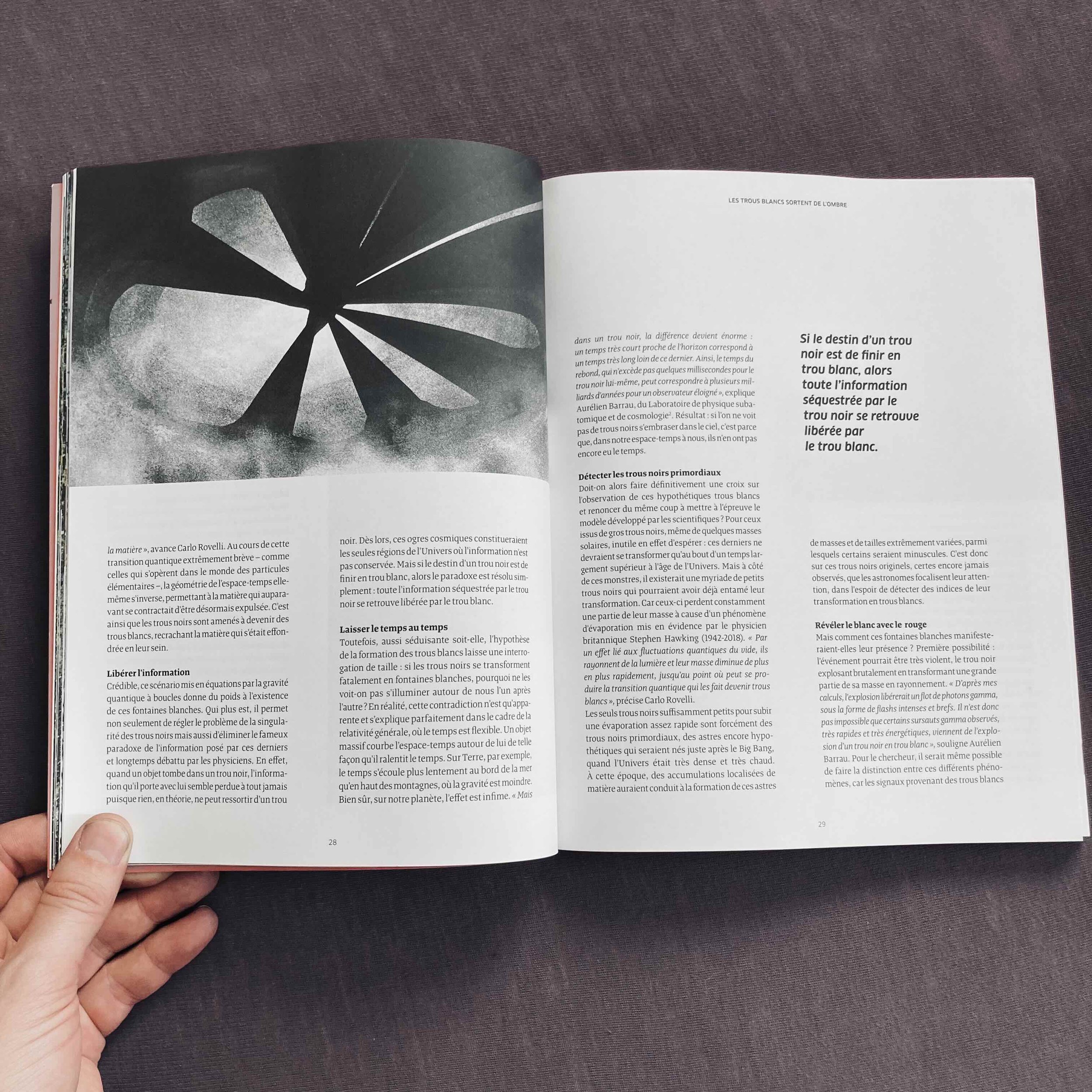
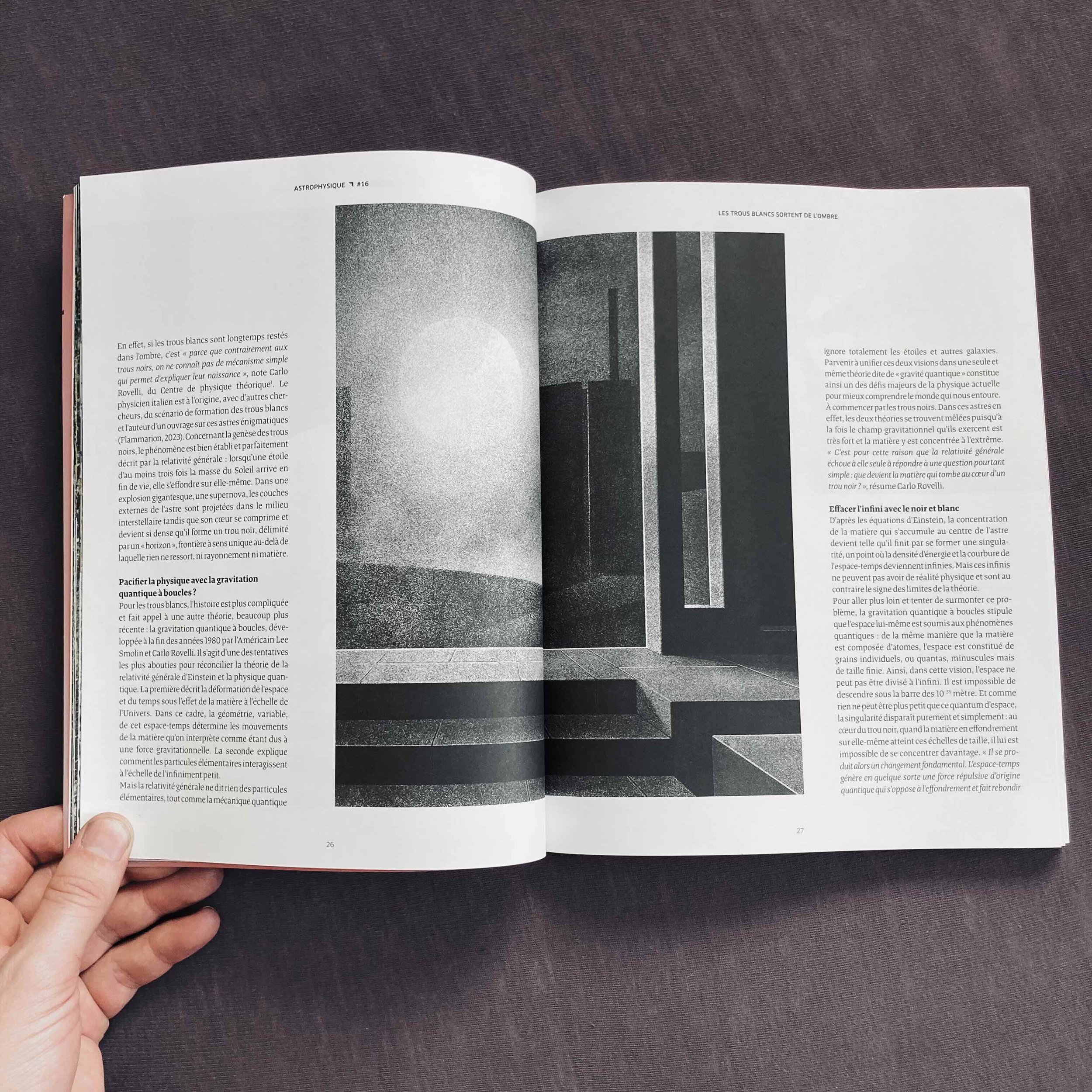
J’ai eu l’occasion en mars 2024 de réaliser des illustrations pour le magazine du CNRS, Carnets de Science, pour un article de Julien Bourdet sur les trous blancs, opposés théoriques des trous noirs dont l’existence est encore hypothétique.
La demande concernant les illustrations consistait en une part de création originale, une autre de modifications de dessins existants et surtout une envie esthétique en dehors des poncifs de l’illustration « spatiale » ou d’une représentation inversée d’un trou noir sur fond étoilé. L’idée a donc été d’évoquer des architectures abstraites, en partie inspirées par Escher : pavages, constructions impossibles, déformations en mouvement, s’éloignant des représentations habituelles d’objets célestes.
Le 3 novembre 2016, le CNRS a lancé sa première revue d’information scientifique destinée au grand public : Carnets de science. Son but : faire découvrir les coulisses de la recherche et donner du sens à la science.
Éditée par CNRS Éditions et mise en vente dans les Relay et les librairies, cette revue semestrielle de 200 pages propose aux citoyens en recherche d’informations des analyses et des décryptages sur l’actualité scientifique et les grandes questions de société.
Reportages, diaporamas, entretiens, points de vue, Carnets de science veut replacer les résultats scientifiques et leurs retombées potentielles dans un contexte plus large, en décryptant les enjeux du domaine, ses thèses émergentes, mais aussi ses controverses, et en donnant la parole aux chercheurs eux-mêmes.
LIENS
-
In March 2024, I had the opportunity to create illustrations for the CNRS magazine, Carnets de Science, for an article by Julien Bourdet on white holes, theoretical opposites of black holes whose existence is still hypothetical.
The request for the illustrations involved both original creations and modifications of existing drawings, with a particular aesthetic desire to move away from the clichés of "space" illustration or a reversed representation of a black hole against a starry background. The idea was to evoke abstract architectures, partly inspired by Escher: tilings, impossible constructions, moving deformations, diverging from the usual representations of celestial objects.
On November 3, 2016, the CNRS launched its first scientific information magazine aimed at the general public: Carnets de science. Its goal is to reveal the behind-the-scenes of research and give meaning to science.
Published by CNRS Éditions and sold in Relay stores and bookstores, this biannual, 200-page magazine, richly illustrated, offers citizens seeking information analyses and insights on scientific news and major societal issues.
Filled with reports, slideshows, interviews, viewpoints, Carnets de science aims to place scientific results and their potential impacts in a broader context by deciphering the stakes of the field, its emerging theories, but also its controversies, and by giving the floor to the researchers themselves.
